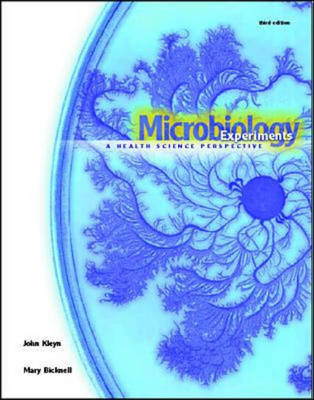
Microbiology Experiments
McGraw-Hill Inc.,US (Verlag)
978-0-07-231903-3 (ISBN)
- Titel ist leider vergriffen;
keine Neuauflage - Artikel merken
I Basic Microbiology. Introduction to Microbiology. 1. Ubiquity of Microorganisms. 2. Bright-field Light Microscopy, Including History and Working Principles. 3. Microscopic (Light-field and Dark-field) Determination of Cell Motility, Form and Viability Using Wet Mount and Hanging Drop Preparations. Introduction to Staining of Microorganisms. 4. Simple Stains: Positive and Negative Stains. 5. Multiple and Differential Stains. Introduction to Microbial Growth. 6. Pure Culture and Aseptic Technique. 7. Defined, Undefined, Selective and Differential Media. 8. Quantification of Microorganisms. Introduction to the Environment and Microbial Growth. 9. Aerobic and Anaerobic Growth. 10. The Effect of Incubation Temperature on Generation Time. Introduction to Control of Microbial Growth. 11. Moist and Dry Heat Sterilization: Thermal Death Point and Thermal Death Time. 12. Control of Microbial Growth with Ultraviolet Light. 13. Osmotic Pressure, and its Effect on the Rate and Amount of Microbial Growth. 14. Antiseptics and Antibiotics. Introduction to Microbial Genetics. 15. Selection of Bacterial Mutants Resistant to Antibiotics. 16. Transformation: A Form of Genetic Recombination. 17. Bacterial Conjugation. 18. Gene Regulation: Induction and Catabolite Repression. Il The Other Microbial World. Introduction to the Other Microbial World. 19. Microscopic Identification of Fungi. 20. Parasitology: Protozoa and Helminths. 21. Prokaryotic Viruses: Bacteriophage Isolation and Titering. III Microbes and Humans. Introduction to Medical Microbiology. 22. Normal Skin Flora. 23. Respiratory Microorganisms. 24. Identification of Enteric Gram-negative Rods. 25. Clinical Unknown Identification. IV Immunology. Introduction to Some Immunological Principles and Techniques. 26. Differential White Blood Cell Stains. 27. Lysozyme, an Enzymatic Form of Natural Resistance. 28. Traditional Agglutination Reactions Employing Microbial and Nonmicrobial Antigens. 29. Lancefield Grouping of Pathogenic Streptococci with a Latex Slide Agglutination Test. 30. Use of an Enzyme-linked Immunosorbent Assay (ELISA) Test for Coccidioides immitis Identification. V Public Health and the Role of Microbiology in the Prevention and Control of Communicable Diseases. Introduction to the Prevention and Control of Communicable Diseases. 31. An Ouchterlony Double Immunodiffusion Test for Coccidioides immitis Identification. 32. Epidemiology: A Staphylococcus Carrier Study. 33. Bacteriological Examination of Water: Multiple-Tube Fermentation and Membrane Filter Techniques. VI Applications of Biotechnology. Introduction to Biotechnology. 34. Identifying DNA with Restriction Enzymes. 35. Identification of Bacteria Using the Ribosomal Data Project VII Projects. Introduction to the Individual Projects. 36.Hydrocarbon Degrading Bacteria, Cleaning Up After Oil Spills. 37.Luminescent Bacteria: Bacteria That Produce Light. 38.Mothylotrophs, Organisms Which Grow on One-Carbon Compounds. 39. Deinococcus, Bacteria With-Out-Of-This-World Capabilities. I Microorganisms Used in this Manual. II Dilution Problems. III Metric System with Conversions to the English System of Measurement. IV pH Adjustment of Liquid and Agar Growth Media. V Use of the Ocular Micrometer for Measurement of Relative and Absolute Cell Size. VI Use of the Hemocytometer for Determining the Total Number of Cells in a Liquid Suspension. VII Preparation of Covered Slide Cultures for Study of the Intact Structure of a Mold Thallus.
| Erscheint lt. Verlag | 1.1.2001 |
|---|---|
| Überarbeitung | M. Gilstrap, Eugene W. Nester |
| Zusatzinfo | colour and b&w illustrations |
| Verlagsort | New York |
| Sprache | englisch |
| Maße | 224 x 234 mm |
| Gewicht | 720 g |
| Themenwelt | Naturwissenschaften ► Biologie ► Mikrobiologie / Immunologie |
| ISBN-10 | 0-07-231903-8 / 0072319038 |
| ISBN-13 | 978-0-07-231903-3 / 9780072319033 |
| Zustand | Neuware |
| Haben Sie eine Frage zum Produkt? |
aus dem Bereich


